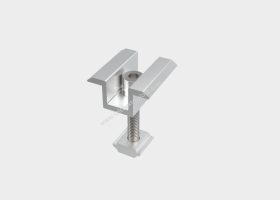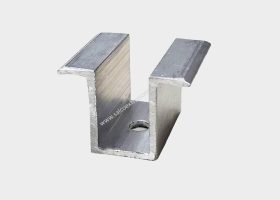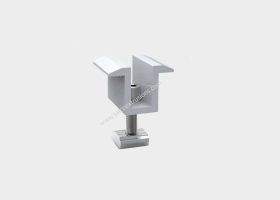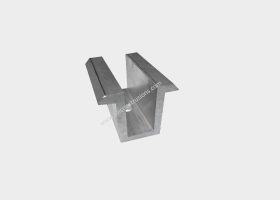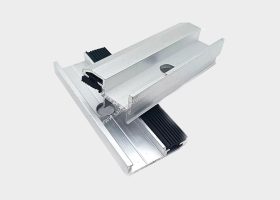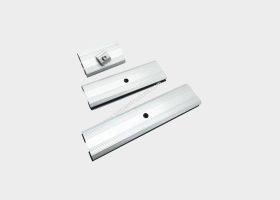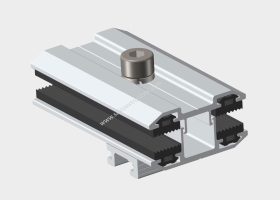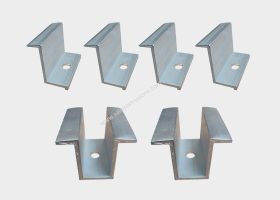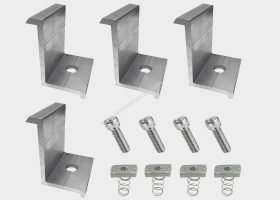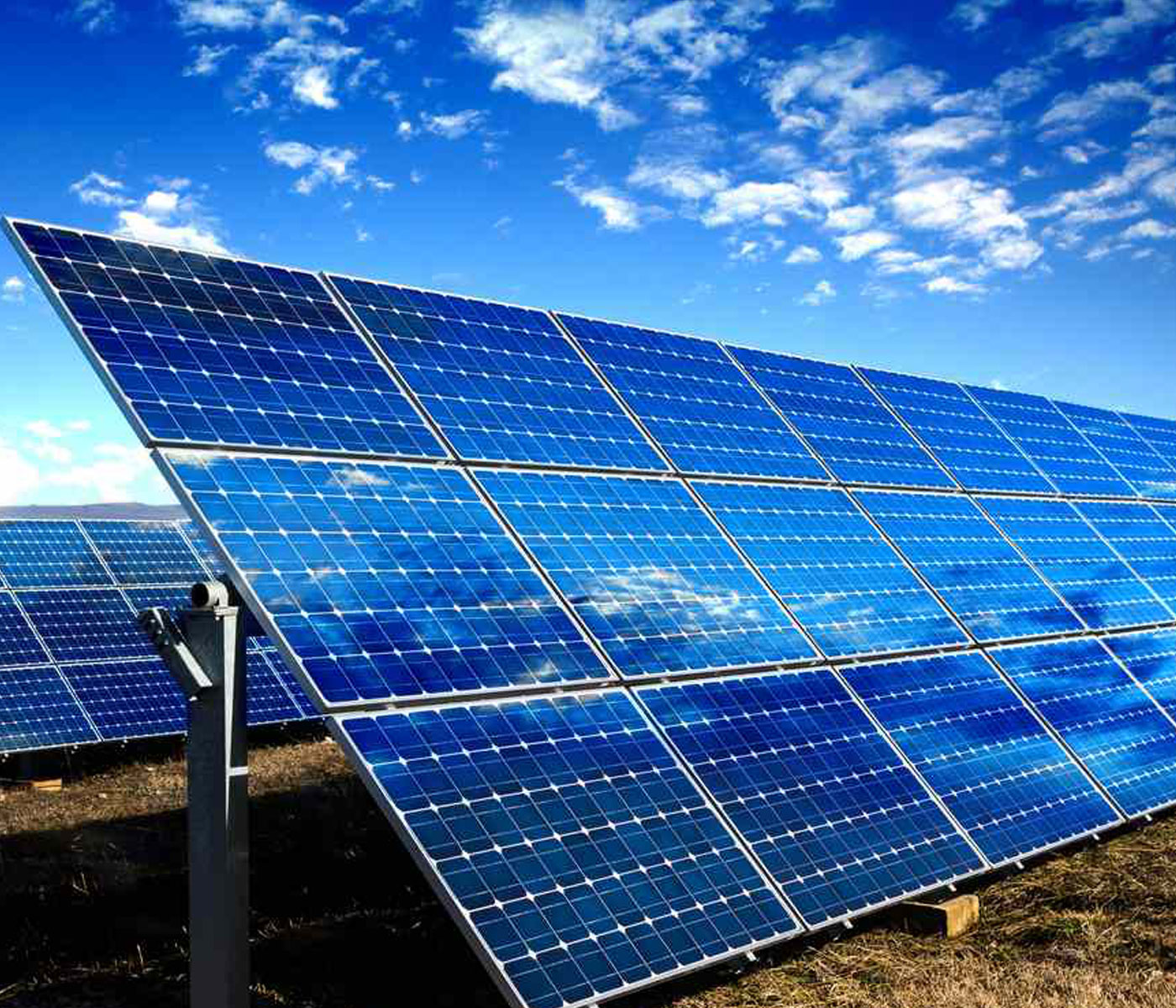
Aluminum Extrusions for Solar Energy
Powering the Renewable Revolution
As the world accelerates its transition toward cleaner and more sustainable energy sources, solar power has emerged as one of the most promising solutions. The global solar energy industry is experiencing unprecedented growth, fueled by innovation, climate policy, and cost reduction. At the heart of many solar systems—whether rooftop installations, utility-scale solar farms, or solar-powered infrastructure—lies a critical yet often overlooked component: aluminum extrusions.
Aluminum extrusions for solar energy play a foundational role in delivering cost-effective, durable, and efficient photovoltaic (PV) systems. From structural mounting systems and module frames to trackers and cable management solutions, aluminum’s unique properties make it indispensable in the solar value chain.
What Are Aluminum Extrusions for Solar Energy?
Aluminum extrusion is a process in which heated aluminum billets are forced through a shaped die to create long, continuous profiles with consistent cross-sections. These extrusions can then be cut, machined, drilled, anodized, or coated depending on their application.
In the solar energy industry, aluminum extrusions are customized into profiles that support PV modules, withstand environmental loads, and provide flexibility for installation across varied terrains and structures.
Why Aluminum Extrusions Are Ideal for Aluminum Extrusions in Solar Energy
✅ Lightweight Yet Strong
Aluminum offers a high strength-to-weight ratio, making it perfect for solar structures that need to support heavy loads (such as glass panels) while minimizing weight. This is especially important for rooftop solar installations, where reducing the load on the roof structure is critical.
✅ Corrosion Resistance
Solar installations are designed to last for decades—often 25 years or more. Aluminum’s natural corrosion resistance, enhanced further through anodizing or powder coating, ensures structural integrity and aesthetics are maintained over time, even in harsh environments such as coastal areas or deserts.
✅ Cost-Effective and Easy to Fabricate
Aluminum extrusions are easy to work with—cutting, drilling, and assembling can be done quickly and without special tools. This reduces labor costs and speeds up installation times, especially in large-scale projects.
✅ Recyclable and Sustainable
Aluminum is one of the most recyclable materials on the planet, and recycling it requires only 5% of the energy needed for primary production. This aligns with the sustainability goals of the solar energy sector, making aluminum an environmentally responsible choice.
✅ Precision and Versatility
Extrusion allows for the creation of complex and highly customized profiles with channels, flanges, and integration points that reduce the number of components in a solar assembly. This helps in optimizing strength, aesthetics, and ease of installation.
Key Applications of Aluminum Extrusions for Solar Energy Systems
1. Solar Panel Frames
The rectangular frames that encase most PV modules are made using aluminum extrusions. These frames must be lightweight, strong, and able to withstand mechanical stress from wind, snow, or thermal expansion.
-
Extruded frames maintain structural rigidity.
-
They support easier mounting and racking.
-
The anodized or coated finish improves weather resistance and aesthetics.
2. Mounting and Racking Systems
Mounting systems, which attach solar panels to rooftops or ground-based structures, are typically made from extruded aluminum profiles. These include:
-
Rails and supports
-
Crossbars and struts
-
Clamps and brackets
The modular nature of aluminum extrusions allows for pre-engineered kits that can be assembled on-site quickly. Racking systems can be designed for:
-
Pitched roofs
-
Flat roofs
-
Ground mounts
-
Floating solar arrays
-
BIPV (building-integrated photovoltaics)
3. Solar Trackers
In utility-scale solar farms, solar trackers are used to adjust the angle of panels throughout the day to follow the sun. These structures require strong, corrosion-resistant materials that can withstand years of continuous movement and weather exposure.
Aluminum extrusions are used in the fabrication of:
-
Tracker arms and support structures
-
Cable trays and housings
-
Motor covers and enclosures
4. Cable Management and Conduit Systems
Efficient cable management is crucial for safety, performance, and maintenance. Aluminum extrusions are used to create conduits, cable trays, and brackets that guide and protect electrical wiring.
Because aluminum does not interfere with electromagnetic signals and resists corrosion, it is a safe and long-lasting choice for managing both DC and AC cabling in solar systems.
5. Solar Carports and Shading Structures
Aluminum extrusions are increasingly used in solar-integrated infrastructure such as:
-
Solar carports
-
Parking structures with solar roofs
-
Canopies and pergolas
-
Greenhouses with integrated solar panels
These structures benefit from aluminum’s aesthetics, ease of installation, and reduced maintenance over time.
Benefits of Using Aluminum Extrusions for Solar Energy
⚙️ Design Flexibility
Aluminum profiles can be tailored to meet the specific requirements of the project. Whether it’s a compact rooftop installation in an urban area or a sprawling solar farm in a rural field, aluminum extrusions can be engineered for maximum efficiency and durability.
💰 Reduced Lifecycle Costs
While aluminum may have a higher upfront material cost than steel, its lower maintenance needs, longer lifespan, and resistance to environmental degradation translate into reduced lifecycle costs.
🛠️ Quick and Modular Assembly
Standardized extruded components reduce complexity on-site. Most systems use bolt-together or clip-on assemblies that don’t require welding or specialized labor. This simplifies logistics and speeds up deployment—critical in large-scale solar projects with tight deadlines.
🌍 Enhanced Sustainability
In addition to being recyclable, aluminum’s light weight means that transporting extruded profiles consumes less fuel than heavier alternatives, reducing the carbon footprint of solar installations.
Industry Trends and Innovations in Aluminum Extrusions for Solar Energy
🔄 Pre-Assembled and Modular Kits
More manufacturers now offer fully pre-engineered aluminum extrusion kits for installers. These kits include everything from frames and rails to bolts and clamps, reducing on-site customization and streamlining large-scale deployment.
🔧 Integration with Smart Systems
With the rise of smart solar solutions, aluminum extrusions are being designed with integrated channels and mounting systems for IoT sensors, performance monitors, and power optimizers.
🏗️ Hybrid Materials and Composites
Some manufacturers are exploring the use of hybrid aluminum-composite extrusions to enhance strength, reduce weight further, or add thermal insulation in specific solar applications.
🚜 Floating Solar and Off-Grid Systems
Floating solar farms (on lakes or reservoirs) require structures that are lightweight, buoyant, and corrosion-resistant. Aluminum extrusions, combined with floatation devices, are now commonly used in these innovative setups.
Aluminum vs. Steel for Solar Mounting Systems
While both aluminum and galvanized steel are used in solar installations, aluminum extrusions offer several key advantages:
| Feature | Aluminum Extrusions | Galvanized Steel |
|---|---|---|
| Weight | Lightweight | Heavier |
| Corrosion Resistance | Excellent (especially with anodizing) | Requires coatings, prone to rust over time |
| Installation Speed | Faster, simpler tools | Slower, often requires welding |
| Aesthetics | Sleek, modern finish | Industrial appearance |
| Maintenance | Minimal | May require periodic recoating |
| Sustainability | 100% recyclable, lower carbon footprint | Recyclable but energy-intensive |
Sourcing Aluminum Extrusions for Solar Energy Projects
When sourcing aluminum extrusions for solar applications, consider the following:
-
Alloy selection: Common choices are 6061 and 6063 alloys due to their balance of strength, corrosion resistance, and extrudability.
-
Surface finish: Anodized finishes are preferred for added weather protection and aesthetic consistency.
-
Certifications: Work with manufacturers who comply with international standards such as ISO, ASTM, or UL.
-
Customization: Choose extrusion suppliers who can provide design assistance, prototyping, and custom dies if needed.
Case Studies and Real-World Impact
-
Utility-Scale Solar Farms: In India, Europe, and the U.S., thousands of acres of solar farms use aluminum mounting structures for rapid installation and long-term performance in extreme heat and dust conditions.
-
Urban Rooftop Projects: Lightweight aluminum racking systems have enabled solar installations on aging buildings where heavy steel would be impractical.
-
Disaster Relief and Off-Grid Power: Portable aluminum-framed solar kits are being used in remote areas and disaster zones to provide clean, renewable energy.
Conclusion: Building the Future with Aluminum Extrusions for Solar Energy
As the solar energy industry continues its exponential growth, so does the need for materials that are adaptable, efficient, and sustainable. Aluminum extrusions for solar energy meet these demands on every level—from cost and performance to recyclability and aesthetics.
Whether you’re designing large-scale solar farms, developing residential solar solutions, or creating solar-integrated infrastructure, aluminum extrusions offer the flexibility, durability, and environmental alignment needed to succeed in today’s renewable energy landscape.
By choosing aluminum, you’re not only investing in performance—you’re contributing to a cleaner, greener planet powered by the sun.
Need custom aluminum extrusions for your solar project? Partner with a reliable extrusion manufacturer who understands the unique challenges and opportunities in solar energy systems.
